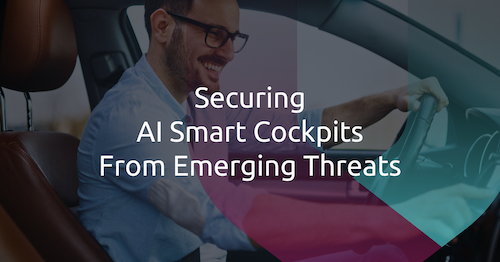
The automotive industry is undergoing a profound shift. AI-powered smart cockpits are redefining the driving experience, offering intuitive voice interactions, real-time driver monitoring, and personalized cabin environments. Vehicles can now adapt to a driver’s mood, anticipate safety risks, and seamlessly integrate with digital ecosystems — all powered by artificial intelligence.
Yet, as AI becomes more embedded in vehicles, it also introduces new attack surfaces and security challenges. Large language models (LLMs) that power these systems rely on vast amounts of data and complex decision-making processes — creating opportunities for cybercriminals to exploit vulnerabilities, manipulate AI-driven responses, and gain unauthorized access to sensitive information.
Rising data breaches in the automotive industry
The financial impact of cyberattacks on connected vehicles is accelerating. In 2023 alone, data breaches in the automotive industry led to an estimated US$9.7 billion in losses. With AI-driven systems processing more personal and operational data than ever before, the attack surface continues to grow.
AI prompt injection: A new category of cyberthreat
Unlike traditional software vulnerabilities, AI-powered cockpits introduce a new type of attack vector: AI prompt injection. This technique allows attackers to manipulate AI systems by embedding hidden commands into system inputs. Consider an in-car voice assistant that reads aloud a text message. If the message contains an invisible malicious prompt, the AI could interpret it as a system command — leading to unauthorized data exfiltration or unintended system changes.
Jailbreaking AI systems to bypass built-in protections
Attackers are also developing techniques to jailbreak AI-powered automotive systems, forcing them into unrestricted modes that override security protocols. This could allow unauthorized users to disable safety features, expose confidential information, or manipulate AI-driven decision-making.
A roadmap for AI smart cockpit security
Such risks highlight the urgency of securing AI-powered cockpits before they become entry points for cyberthreats. To mitigate these risks, automotive manufacturers (OEMs) and suppliers must adopt a proactive security strategy that addresses AI vulnerabilities at every stage:
- Building security into AI from the start: adopting a secure-by-design approach, restricting AI model permissions, enforcing zero-trust policies, and limiting access to sensitive data.
- Strengthening data privacy protection: applying strict encryption and access controls to prevent AI-powered cockpits from becoming high-value targets for data theft.
- Preventing AI prompt injection and jailbreak attacks: ensuring AI models are trained to resist manipulation techniques, preventing unauthorized commands from bypassing security measures.
- Implementing real-time monitoring: continuous AI-driven anomaly detection to identify and prevent emerging threats.
- Deploying “AI guardians”: secondary AI models trained to detect and mitigate malicious inputs before they can compromise system integrity.
Our white paper “AI Smart Cockpits: Driving Innovation, Navigating Security Risks” offers a detailed examination of the risks facing AI-powered vehicles and outlines critical security strategies for mitigating them. Key insights include:
- The innovations that are driving AI-powered cockpits forward
- How cybercriminals are exploiting AI vulnerabilities to compromise vehicle security
- The growing risk of AI prompt injection and its real-world implications
- Why AI security must be integrated, not added as an afterthought
- How AI guardians and next-generation security frameworks can enhance cockpit resilience
With AI playing an increasingly central role in vehicle functionality, automotive cybersecurity strategies must evolve to match emerging threats. Access the full white paper to explore in-depth strategies for protecting AI-driven vehicles.